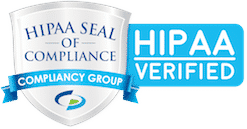Emme is a HIPAA-compliant company and your data privacy is our priority. Read more here.
Breast Cancer Awareness Guide
In honor of World Cancer Day, we are sharing our Breast Cancer Awareness guide — including basic stats, what it means, and how to conduct a monthly breast exam.
What is breast cancer?
Cancer is a broad term for a class of diseases characterized by abnormal cells that grow and invade healthy cells in the body. Breast cancer starts in the cells of the breast as a group of caner cells that can then invade surrounding tissues or spread (metastasize) to other areas of the body.
What can you do now?
Perform a monthly breast self exam.
Some breast cancer symptoms can be caught early just by being proactive about your breast health. By performing monthly breast self-exams, you will be able to more easily identify breast cancer before there are signs or symptoms of the disease. Be sure to talk to your healthcare professional if you notice anything unusual.
How to perform a monthly breast self-exam
1. Observe your breasts
In front of the mirror, visually inspect your breasts with your arms at your sides. Next, raise your arms high overhead. Finally, rest your palms on your hips and press firmly to flex your chest muscles
What to look for:
- Abnormal contour and color of the breasts
- Dimpling, puckering, and bulging of the skin
- Nipple discharge
2. Touch your breasts
With the pads/flats of your 3 middle fingers, check the entire breast and armpit area pressing down with light, medium, and firm pressure. Check both breasts each month, feeling for any lumps, thickening, hardened knots, or other changes.
What to feel for:
- New lump in the breast or underarm (armpit)
- Thickening or swelling of part of the breast
- Pain in any area of the breast
How common is breast cancer?
Breast cancer affects 1 out of 8 women in the United States.
Fortunately, death rates from breast cancer have been declining since around 1990, in part due to better screening and early detection, treatment, awareness, and ongoing improvements to treatment options.
What can you do to reduce the risk of breast cancer?
- Exercise regularly (at least four hours a week).
- Don’t drink alcohol, or limit alcoholic consumption.
- Avoid exposure to chemicals that can cause cancer (carcinogens).
- Reduce your exposure to radiation during medical tests like mammograms, x-rays, CT scans, and PET scans.
- If you are taking hormone replacement therapy or oral contraceptives, ask your doctor about the risks and find out if it it right for you.
...
Sources:
